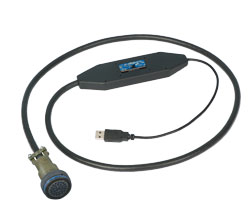Interoperability Defined
June 10, 2010Interoperable communication systems can allow federal, state, and local law enforcement agencies with different radio communications hardware to interact seamlessly during times of crisis or natural disasters. Likewise, on the battlefield, interoperable communications can allow different branches of the military to coordinate joint operations anywhere in the world regardless of the tactical radio hardware that each element is using. Whether you are looking at the public safety services or the military, digital radio communications interoperability is one of the key technical issues that federal, state, and local government organizations are working to overcome. But what does interoperability really mean to the government?
According to the Department of Defense Dictionary of Military Terms, interoperability is defined as, “the condition achieved among communications-electronics systems or items of communications-electronics equipment when information or services can be exchanged directly and satisfactorily between them and/or their users. The degree of interoperability should be defined when referring to specific cases.”
Based on this definition, interoperability seems to be a fairly straightforward concept. However, issues with interoperability are commonly overlooked until problems emerge. While interoperability is well-defined at the top level, it becomes much more complex as you move closer to the front lines. In practice, interoperability issues often become apparent when users on the front lines cannot 
Interoperability comes at a cost. Synchronous serial is one of the core technologies incorporated into many radio communicationsplatforms. Most modern radios, whether designed for public safety or military use, contain circuitry that allows them to communicate with computers via a synchronous serial connection. In addition to programming, the radio this connection allows the user to send data from their computer system over their radio.
Non-proprietary synchronous serial products allow users to break free from proprietary hardware and software platforms by offering users all of the tools they need to construct their own interoperable data communication solution. By putting control into the hands of the users, they can ensure the interoperability of their solution for long periods of time and keep costs down by programming their application in a fashion that makes it compatible with COTS synchronous serial hardware.
Over the past 24 years, Sealevel has been privileged to help many of the public safety and military organizations in the United States develop communications architectures to address interoperability issues. Hopefully, by sharing the information that we have learned about mission critical data communications, we can continue to contribute technologically advanced solutions to keep our public safety and military personnel connected and safe.